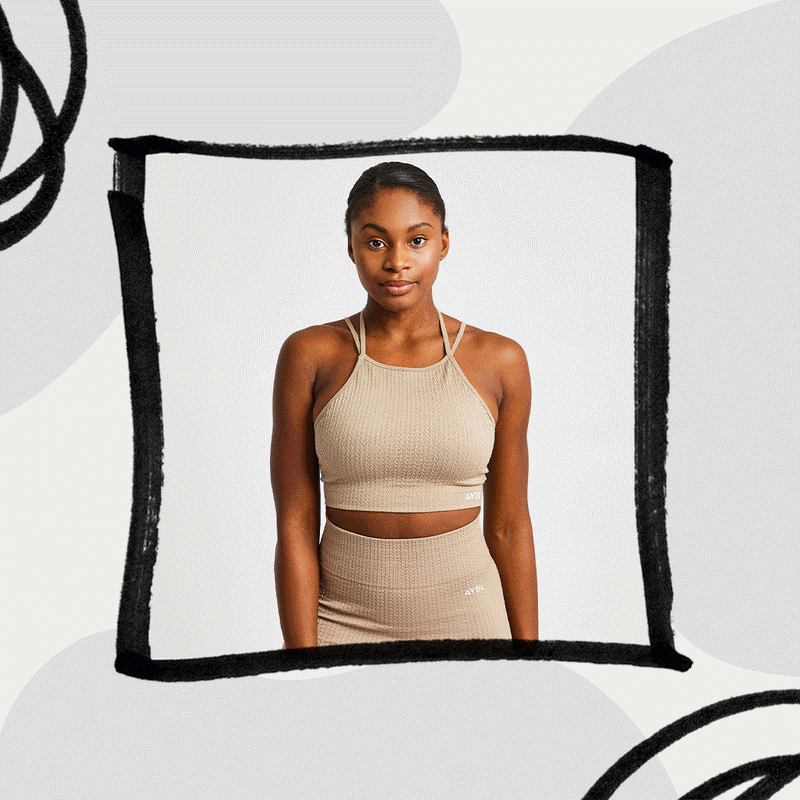
A Look Back At 2022: The AYBL Highlights
What. A. Year.
We’ve gone from launching our first ever event to releasing 16 new collections all in the space of just 12 months. To say it’s been unforgettable would be a bit of an understatement!
So, to celebrate, we’re taking a look back at some of our greatest achievements - and trust us when we say, there’s been a few. It’s kind of expected when you’re the UK’s fastest-growing company…
But before we get started, we just wanted to thank you for your continued support. As a community, we’ve stood together in unity throughout it all - and it’s for that reason that we can continue our mission to empower women through fitness and beyond.
ALL NEW AYBL
This year we launched not one, not two, but 16 new innovative collections. That’s 16 different ways to achieve your goals!
From our elegant Flow Collection to our next-level Ignite Collection, we’ve gone above and beyond to bring you supportive and versatile styles to inspire you all year round. Just you wait for 2023, girls! It’s the year of new innovations, new goals and, of course, new AYBL.
Here’s a few of our recent launches that we can’t get enough of:
OUR ATHLETE FAMILY GREW (AND GREW)
For us, our community means everything! That’s why we’re constantly looking for new ways to make our female family more inclusive and more diverse.
This year, we took on even more inspirational athletes who are able to support and empower our community to get after their goals and who share our vision to make fitness accessible to all women.
Get to know more about some of our incredible athletes here:

EPIC EVENTS
This year was full of firsts for AYBL, kicking off with none other than Achieve With AYBL. The influencer event, held in London, gave some of our UK athletes the opportunity to meet one another for the very first time and learn more about us and our achievements as a female fitness brand. Entailing delicious smoothies and poke bowls, as well as strength and conditioning and yoga classes, our first ever event was jam-packed full of AYBL magic.
Fast forward to June - one of our busiest months to date - where members of our Social, Sponsorship and Brand Teams jet setted to LA. Here they met some of our American athletes to capture some world-class content for our Summer Sale. Stopping in some of the world’s most iconic locations, including Beverly Hills, Muscle Beach and Gold’s Gym, we no doubt set the bar high for our very first international trip.
Later that month, we headed to the UK’s capital, where we hosted our very first pop-up shop, namely AYBL X LDN. It was a huge success, with long-time and new members of our community travelling from far and wide to get a sneak peek of our Velocity Collection, meet some of our athletes and experience AYBL IRL. It was an event we certainly won’t be forgetting any time soon.
 AN ICONIC FIND YOUR REASON CAMPAIGN
AN ICONIC FIND YOUR REASON CAMPAIGN
This year, our Find Your Reason Campaign in aid of International Women’s Day was nothing short of iconic.
With a bid to remind our community just how capable and strong each and every one of them are, we created a campaign that would empower women to take charge of their fitness on their own terms. This meant getting active in a way that suits them and despite what challenges they may face.
As part of this, we released five Find Your Reason T-Shirts to raise money for Sports Aid to help support British athletes progress in their sport - and thanks to our female community (that’s you BTW!), we raised an incredible £6,650!

And that’s not nearly half of what we achieved in 2022! On top of our three epic sales - including our Black Friday Sale, just last month - our social media following more than tripled! You guys never fail to impress!
As you’ve probably guessed, we're not about to stop there! So, sit tight because next year is only going to be bigger, better and even more legendary!
